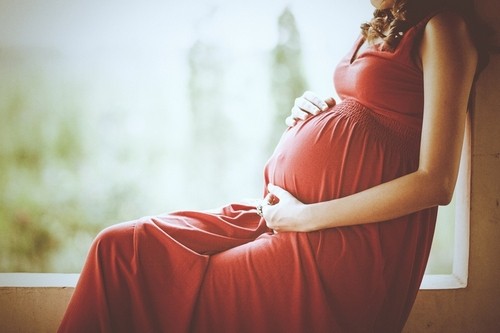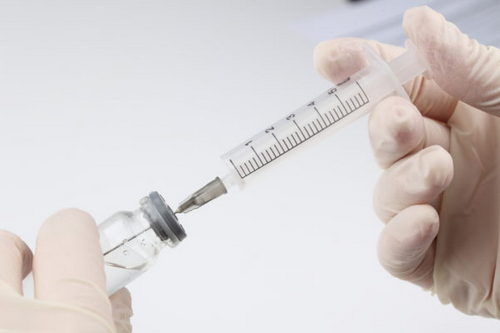Anemia in medicine is called a syndrome in which there is too little hemoglobin in the body – the main blood protein that carries oxygen.
This condition can be caused by a lack of hemoglobin-containing red blood cells, but most often the cause of anemia in pregnant women is a lack of iron, without which hemoglobin cannot fulfill its function.
Anemia or anemia is a syndrome that is often found in women. And the most vulnerable for him are pregnant ladies. Indeed, during pregnancy, a woman’s body should supply with blood and all the substances in it not only herself, but also the unborn baby.
Anemia and pregnancy
Unfortunately, in practice it turns out that anemia and pregnancy are two inseparable friends. About a third of women in our country suffer from anemia during pregnancy. And in most cases, the cause of anemia during pregnancy is a lack of iron. The syndrome does not begin to appear immediately after the onset of pregnancy, but only in the second and third trimester. And the closer the moment of birth, the more the state of hemoglobin deficiency will worsen.
Why is this happening? First you need to remember that the female body contains relatively little iron. This is due, first of all, to the fact that women lose a lot of blood, and with it, iron, during menstruation. In the first trimester of pregnancy, a woman does not have menstruation, and the size of the fetus is still small, so anemia is less common.
And then iron consumption increases. A sharp jump in iron intake is observed at 16-20 weeks of pregnancy, which is associated with the beginning of the hematopoiesis process in the embryo. Part of the iron goes to build the body of the fetus. In addition, the need of the organism of the future mother for oxygen increases, and, consequently, the need for iron also increases.
In total, during pregnancy, a woman needs 1.2 g of iron (with a total amount of iron in the body equal to 3 g). The average daily requirement of a woman for iron outside the period of pregnancy is 2 mg, and during pregnancy – 4 mg. If the difference is not made up, then the woman’s body will first use iron from the reserves in the liver (if any) to create hemoglobin, and then hemoglobin will not form at all.

Factors contributing to the development of anemia during pregnancy:
- a short break between previous births;
- malnutrition or unbalanced diet before pregnancy;
- age over 35 years;
- age younger than 18 years;
- gastritis and other diseases of the gastrointestinal tract and liver;
- early manifestation of gestosis, because of which the woman’s usual diet is disturbed;
- long (more than 5 days) menstruation in a woman shortly before pregnancy;
- chronic infections, primarily hepatitis;
- helminthic infestations.
Anemia during pregnancy can be not only iron deficient. There are also other types of anemia:
- hemolytic (accelerated destruction of red blood cells),
- aplastic (violation of the synthesis of blood cells),
- caused by a deficiency of vitamin B12 and folic acid.
Therefore, with signs of anemia during pregnancy, you should not self-medicate, swallowing iron preparations in batches. In the absence of iron deficiency, this method of treatment can only harm, not only the mother herself, but also her unborn child. It is better to consult a doctor so that he would make an accurate diagnosis.
Gestational anemia during pregnancy
The cause of the gestational form of the disease is pregnancy itself. Sometimes carrying a child simply exacerbates the anemia that a woman has before that. This type of disease can no longer be considered gestational.
Factors contributing to gestational anemia:
- multiplicity
- wrong diet
- gastrointestinal tract diseases.
Symptoms and signs
Symptoms of anemia during pregnancy are divided into those caused by tissue hypoxia and caused by a lack of iron in various organs and tissues.
Symptoms associated with hypoxia include:
- weakness;
- fatigue;
- drowsiness or insomnia;
- headaches;
- decreased memory and concentration;
- pallor;
- nervousness, irritability.
Signs of iron deficiency in tissues:
- fragility of nails, hair;
- dryness and peeling of the skin;
- cracks in the skin;
- angular stomatitis;
- change in taste and smell;
- inflammation of the mucous membranes;
- weakened immunity;
- liver dysfunction.
How is this dangerous?
The harm from the negative effects of anemia should not be underestimated. This is especially true for expectant mothers, who must be aware of the danger of anemia during pregnancy. Indeed, the health of her future baby depends on the health of the mother. Anemia during pregnancy leads to hypoxia of the fetal tissues and, above all, the brain, insufficient development of its organs.
Other consequences of the disease:
- preeclampsia
- uterine bleeding
- spontaneous abortion,
- premature placental abruption,
- premature birth
- the birth of a dead child.
In anemic women, childbirth is more difficult due to muscle failure. The consequence may even be fatal due to heavy bleeding.
But even if the birth goes smoothly, and the baby is born, then the problems will not end there. A child may experience various diseases, and his mother may not have breast milk.
Babies born to anemic mothers often:
- have a reduced weight;
- have insufficient development of organs and tissues;
- have respiratory problems;
- lag behind in mental and physical development;
- suffer from a lack of iron, and the anemia caused by it;
- have weakened immunity;
- more prone to allergic reactions.
The degree of anemia in pregnant women
It is customary to differentiate the degrees of anemia using the level of hemoglobin in the blood. This parameter is easily determined by a biochemical blood test.
| degree of anemia | hemoglobin, g / l |
| light | less than normal but greater than 90 |
| average | 70-90 |
| heavy | less than 70 |
In any case, even in the most healthy and healthy woman during pregnancy, hemoglobin will be reduced. This is due to the fact that the volume of circulating blood in the body of a pregnant woman increases. There is nothing to be done about it, and this phenomenon is recognized as a physiological norm. Therefore, the lower limit of the norm of hemoglobin for pregnant women is slightly reduced compared to the lower limit of the norm for non-pregnant women.
| category | lower hemoglobin rate, g / l |
| non-pregnant | 120 |
| 1 trimester | 110 |
| 2 trimester | 105 |
| 3 trimester | 100 |
Iron deficiency anemia is preceded by a syndrome such as sideropenia. In this condition, abnormally low hemoglobin values are not yet observed, however, serum iron and ferritin levels are reduced, which indicates the depletion of iron stores in the body.
Mild anemia
A mild disease is observed at a hemoglobin level of 90-100 (110) g / l. In many women, mild anemia is not manifested by any symptoms or manifests itself in slight pallor, excessive fatigue. Many women do not even notice these symptoms, linking them to a deterioration in their natural well-being, nerves, etc. Nevertheless, from the initial stage of the disease, the fetus may develop hypoxia. It is important to begin treatment of anemia at this stage so that it does not negatively affect the condition of the child and does not go into more severe forms that threaten his life.
Moderate to severe anemia
When the disease goes into the middle stage, it becomes impossible to ignore its manifestations.
Signs of anemia during mid-stage pregnancy include:
- deterioration of the skin (dryness and peeling, the appearance of cracks),
- deterioration of the condition of the hair (dryness, brittleness, loss),
- sleep disturbances
- tachycardia
- attacks of causeless weakness,
- episodic fainting.
With anemia, heart failure can also develop. Sometimes a woman may have strange eating habits. A woman may feel an indomitable desire to eat chalk, clay, raw minced meat.
The therapy of anemia, if it has not been carried out up to this point, must be started immediately so that the patient’s condition does not become severe, the fetus is terminated prematurely, and the woman does not have to be hospitalized.
Diagnosis of Anemia
Diagnosis allows you to determine not only the type of anemia, but also its stage. Blood tests (general and biochemical) help diagnose anemia during pregnancy.
The doctor is particularly interested in the following parameters:
- hemoglobin level;
- hematocrit;
- relative and absolute number of main blood cells: red blood cells, white blood cells, platelets;
- hemoglobin content in one red blood cell;
- serum iron level;
- ferritin level;
- ESR;
- reticulocyte count;
- color indicator of blood;
- the size and shape of red blood cells.
If a decrease in hemoglobin is detected, a woman needs to take blood tests every 1-2 weeks.
Anemia Treatment
The method of therapy depends on the etiology of anemia. With iron deficiency anemia of the initial stage, it is necessary to revise the diet of a woman. If there are few products containing iron in it, then this situation needs to be corrected. A lot of iron is found in meat products (beef, lamb, chicken, turkey), a little less – in fish, eggs, nuts, buckwheat. Of course, not all iron is absorbed. The degree of digestibility of iron from meat, for example, is only one fourth.
Beef liver, which is usually recommended by nutritionists for anemia caused by iron deficiency, should not be consumed during pregnancy because of the high content of vitamin A in this product, which can have a toxic effect on the developing fetus.
A lot of iron in fruits and vegetables – plums, pomegranates, spinach, apples. However, iron is absorbed from plant products 3-5 times worse than from meat products, and in the absence of vitamin C in the diet, it is not absorbed at all. True, in plant foods contains an abundance of vitamin C. However, it should be remembered that during heat treatment it is destroyed. Therefore, a woman can get iron only from fresh vegetables, and not from boiled or stewed ones.
It is also worth remembering that animal fats, tea, calcium-rich foods, and soy slow the absorption of iron. However, completely abandoning products containing calcium during pregnancy is unreasonable, because it is also required in large quantities to build the body of the fetus.
If dieting fails to increase hemoglobin, or the disease is in the middle stage, then iron preparations are prescribed. Of these, iron is absorbed much more efficiently than from food. There are divalent and trivalent drugs. Bivalent iron is better absorbed, but trivalent drugs have fewer side effects.
Given the possibility of an overdose of iron when taking iron-containing drugs, such parameters as the type of drug, dose and duration of the course should be chosen by a doctor. In addition, iron preparations are contraindicated in certain blood diseases.
Many iron preparations contain vitamins and biological active substances useful for pregnant women, such as folic acid, cyanocobalamin.
If a pregnant woman for some reason (diseases of the digestive tract, drug intolerance) cannot take iron preparations orally, then an injection course is prescribed.
Anemia Prevention
If a hemoglobin deficiency in a pregnant woman is not detected, this does not mean that the expectant mother is safe from this condition and its consequences.
Women should be especially concerned:
- suffered from anemia in a previous pregnancy,
- under 18 years old
- over 35 years old
- having a multiple pregnancy form,
- following a vegetarian diet
- suffering from chronic diseases of the gastrointestinal tract.
The main method of prevention is a proper diet. In the diet of pregnant women should be basic foods – meat, fish, eggs, fresh vegetables and fruits, nuts, dairy products. Of course, during pregnancy, one should not forget about the need to regularly take blood tests.



